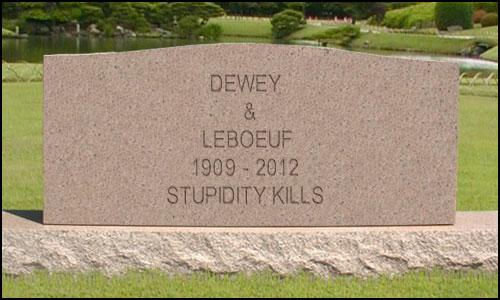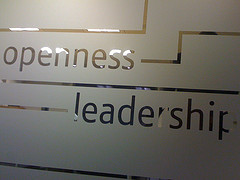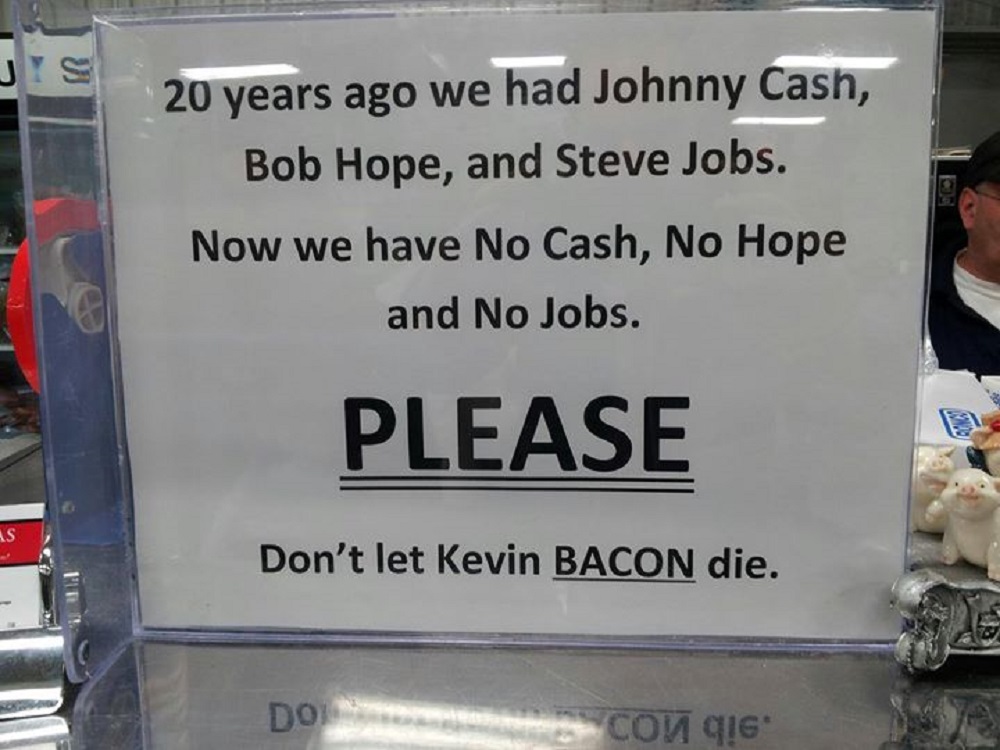|
|
|
Archive for March, 2014
Monday, March 17th, 2014

What kind of boss/colleague/subordinate are you?
Does William Butler Yeats’s line “The best lack all conviction, while the worst / Are full of passionate intensity,” fit you?
Sounds like a bad thing, but actually it’s a great attitude to cultivate.
Look at the two parts separately.
Let’s take the second part first; I believe “while the worst / Are full of passionate intensity” refers to people who espouse a certain approach or methodology so emphatically that nothing sways them that there may be a better way or even that a different method will accomplish the same thing.
“The best lack all conviction” could be taken to mean being totally wish-washy with no firm beliefs, but taken together with the second part I think it means being open to new ideas/approaches.
In other words, the first is open to learning and the second is a ‘my way or the highway’ type.
Who would you rather work with?
If you want the first, be sure not to model the second.
Flickr image credit: Tom Henrich
Posted in Culture, Personal Growth | No Comments »
Friday, March 14th, 2014
A Friday series exploring Startups and the people who make them go. Read all If the Shoe Fits posts here

I don’t think the list of 17 Traits That Distinguish The Best Startup CEOs were in priority order, but if they are I disagree and think the first two are out of order.
The list reads,
- [Is] good at hiring AND firing.
- Builds a culture, not just a company.
It should read,
- Builds a culture, not just a company.
- Good at hiring AND firing, but rarely needs to.
Founders who go into the game with a conscious sense of their own values, create a culture based on those values and make sure to communicate it rarely find it necessary to fire anyone.
In other words, they use their culture to filter their hiring and are tough enough to walk away from candidates with good skills who aren’t culturally compatible.
But how do you know? How can you evaluate culture compatibility in the short time you interview?
I explained how to do it way back in 1999 when the following was published by MSDN and have republished it here every few years; I think it’s time again.
Don’t Hire Turkeys!
Use Your Culture as an Attraction, Screening and Retention Tool to Turkey-Proof Your Company.
Companies don’t create people—people create companies.
All companies have a culture composed of its core values and beliefs, essentially corporate MAP (mindset, attitude, philosophy™) and that culture is why people join the company and why they leave if it changes.
Generally, people don’t like bureaucracy, politics, backstabbing, etc., but when business stress goes up, or business heats up, cultural focus is often overwhelmed by other priorities.
In startups, it’s easier to hire people who are culturally compatible, because the founders first hire all their friends, and then their friend’s friends.
After that, when new positions have to be filled the only people available are strangers.
So how do you hire strangers and not lose your culture?
Since your culture is a product of your people, hire only people with matching or synergistic attitudes. The trick is to have a turkey sieve that will automatically screen out most of the misfits and excite the candidates who do have the right values and attitudes.
Here is how you do it.
- Your sieve is an accurate description of your real culture.
- It must be hard copy (write it out), fully publicized (everyone needs to know, understand, believe and talk about it), and, most important of all, it must be real.
- Email it to every candidate before their interview and be sure that everyone talks about the culture during the interview and sells the company’s commitment to it.
- Everybody interviewing needs to listen carefully to what the candidate is saying and not saying; don’t expect a candidate to openly admit to behaviors that don’t fit the company MAP, since she may be unaware of them, may assume that your culture is more talk than walk or consider it something that won’t apply to her.
- Red flags must be followed up, not ignored because of skills or charm.
- Consider the various environments in which she’s worked; find out if she agreed with how things were done, and, more importantly, how she would have done them if she had been in control.
- Whether or not the candidate is a manager, you want to learn about her management MAP, approaches to managing, leadership and work function methods.
- Probing people to understand what their responses, conscious as well as intuitive, are to a variety of situations reveals how they will act, react, and contribute to your company’s culture and its success.
Finally, it is up to the hiring manager to shield the candidate from external decision pressures, e.g., friends already employed by the company, headhunters, etc.
Above all, it is necessary to give all candidates a face-saving way to withdraw their candidacy and say no to the opportunity. If they don’t have a graceful way of exiting the interview process they may pursue, receive, and accept an offer, even though they know deep down it is not a good decision.
A bad match will do major damage to the company, people’s morale and the candidate, so a “no” is actually a good thing.
Remember, the goal is to keep your company culture consistent, flexible and true to your core values as you grow.
From the time you start this process, you need to consciously identify what you have, decide what you want it to be, publicize it, and use it as a sieve to be sure that everyone who joins, fits.
Use your cultural sieve uniformly at all levels all the time. If someone sneaks through, which is bound to happen occasionally, admit the error quickly and give her the opportunity to change, but if she persists then she has to go.
For more help, download the CheatSheets in the right-hand frame and/or give me a call at 360.335.8054.
No charge:)
Image credit: HikingArtist
Posted in If the Shoe Fits | 1 Comment »
Thursday, March 13th, 2014
Architect David Fisher has a vision.
It’s an 80 story skyscraper to be built in Dubai.
Similar to the Suite Vollard completed in 2001 in Brazil, each floor will be able to rotate independently. This will result in a constantly changing shape of the tower. Each floor will rotate a maximum of 6 metres (20 ft) per minute, or one full rotation in 90 minutes.
It will be the world’s first prefabricated skyscraper with 40 factory-built modules for each floor. 90% of the tower will be built in a factory and shipped to the construction site. This will allow the entire building to be built in only 22 months. The core of the tower will be built at the construction site. Part of this prefabrication will be the decrease in cost and number of workers (90 at the work site and 600 in the factory instead of 2,000 needed). The total construction time will be over 30% less than a normal skyscraper of the same size. The majority of the workers will be in factories, where it will be much safer. The modules will be preinstalled including kitchen and bathroom fixtures. The core will serve each floor with a special, patented connection for clean water, based on technology used to refuel airplanes in mid-flight.
The entire tower will be powered from wind turbines and solar panels. Enough surplus electricity should be produced to power five other similar sized buildings in the vicinity. The turbines will be located between each of the rotating floors. They could generate up to 1,200,000 kilowatt-hours of energy. The solar panels will be located on the roof and the top of each floor. Wikipedia
It is beautiful; another home for the super-wealthy.
I don’t blame Fisher for focusing on that demographic, but look again at the stats.
It’s prefab, which means hundreds of decently paying factory jobs.
Prefab cuts building time by 30%.
The building will be self-sustaining both energy and water-wise.
Think what smaller versions, filled with non-luxury units, would mean to people who are homeless or living in primitive conditions.
Not fancy, but clean, light, safe and sustainable.
Now think about the amount of government and NGO money wasted across the globe sticking band-aids on the housing, clean water and energy problems that beset most of the world’s populations.
There is nothing wrong with innovation meant for the wealthy, but we need to remember that it can be re-imagined for the rest of us.
It just takes the interest and guts to do it.
YouTube credit: Design Magazine
Posted in Entrepreneurs, Innovation | No Comments »
Wednesday, March 12th, 2014
 It’s well known that what goes up comes down; programmers know that ‘garbage in/garbage out’ always holds true (and applies to more than programming, but that’s another post) and bosses (should) know that at some point current employees become former employees. It’s well known that what goes up comes down; programmers know that ‘garbage in/garbage out’ always holds true (and applies to more than programming, but that’s another post) and bosses (should) know that at some point current employees become former employees.
While people leave because of layoffs, it’s often by choice; either way it’s bad news and, like all bad news, requires clear communications to avoid repercussions.
However, there’s one repercussion that even the best communications can’t avoid and that’s what I call boss/company stupidity or BCS.
Granted, there’s a lot of BCS floating around the workplace, but this particular BCS ranks in the top three.
It’s the attitude that no matter how great employees are when they leave they are suddenly no good, their time with the company had no value and the resources invested in their growth were wasted.
The traditional way of looking at the “return on investment” on the training and coaching of employees is that it is truncated the moment they walk out of that door.
Which is really, really stupid.
Stupid because both companies and bosses have street reputations and while current employees contribute to them, those who leave have an outsize impact that lives everywhere forever in our social, wired world.
Flickr image credit: library_mistress
Posted in Communication, Motivation, Retention | No Comments »
Tuesday, March 11th, 2014
In 2012 we looked at how a bad judgment and a toxic, dysfunctional culture killed off the 113-year-old premier law firm of Dewey & LeBoeuf.
But having read the latest I have to revise what I said.
In addition to bad judgment, think gross stupidity.
I suppose I should say “alleged,” but the evidence leaves little doubt regarding just how stupid these bosses were.
Consider the smoking emails between Steven Davis, Dewey’s former chairman; Stephen DiCarmine, the firm’s former executive director; Joel Sanders, the former chief financial officer; and Zachary Warren, a former client relations manager.
Four men, who were charged by New York prosecutors on Thursday with orchestrating a nearly four-year scheme to manipulate the firm’s books to keep it afloat during the financial crisis, talked openly in emails about “fake income,” “accounting tricks” and their ability to fool the firm’s “clueless auditor,” the prosecutors said. (…) One of the men even used the phrase “cooking the books” to describe what they were doing to mislead the firm’s lenders and creditors in setting the stage for a $150 million debt offering…
And ignorance isn’t a viable excuse for lawyers by any stretch of the imagination.
The global number one rule in our post-Enron world is that you do not write anything in emails that you wouldn’t want to see on the front page of your newspaper.
In case you aren’t familiar with them, the Darwin Awards “are cautionary tales about people who kill themselves in really stupid ways, and in doing so, significantly improve the gene pool by eliminating themselves from the human race.”
Perhaps there should be a special award for people who kill companies through acts of excessive stupidity.

Image credit: Tombstone Generator
Posted in Culture, Ethics, How Stupid Can You Get, Leadership | No Comments »
Monday, March 10th, 2014
How many men claim to understand women?
How often do you hear a man say about his mom/spouse/girlfriend/plain friend/other female ‘I know exactly what she wants?’
Rarely? Never?
Then why do they assume they know what women want when it comes to user experience in technology?
No, this isn’t about hiring more female programmers; it’s about hiring women from backgrounds not typically associated with technology.
People such as Genevieve Bell, an anthropologist hired as director of user experience at Intel Labs, the company’s research arm.
She runs a skunk works of some 100 social scientists and designers who travel the globe, observing how people use technology in their homes and in public.
Social scientists (of both sexes) look at the world differently than your typical tech employee, whether in development or marketing.
It’s even more important when it comes to social media, where many companies are/were started and/or run by guys.
Guys who are often younger and being younger know more (if not all) about creating great user experiences—and when they do want help they tend to ask guys who are a lot like them.
Guys who tend to think of their audience as people similar to them in gender and age.
Not intentionally, but the unconscious bias is still there.
The problem for these guys is that women are a giant presence in social media, consuming more, interacting more, and in more ways, than guys; not only that, but average users are in their 30s.
It’s pretty much a given that women and men are different.
And that one of the benefits of age is experience and experience changes how people think, react and interact.
Knowing all this you may find it beneficial to hire a more diverse workforce, including people who have lived long enough to understand a variety of people from a variety of perspectives.
Posted in Culture, Hiring | No Comments »
Friday, March 7th, 2014
A Friday series exploring Startups and the people who make them go. Read all If the Shoe Fits posts here

Two questions:
- Are you working to build a culture of innovation in your startup?
- Do you live the startup mindset of 100 hour weeks, all night hackathons, 24/7 availability and no time for vacations?
If you answered ‘yes’ to both you’re in trouble, because a yes to the second sooner or later will nullify the first.
According to Marc Barros, co-founder and former CEO of Contour, there are five actions you can take to avoid killing off your golden egg, i.e., your culture of innovation.
Here they are, with my caveats (follow the link to read the originals).
- Offer Unlimited Vacation: while this isn’t always possible, and may not even work, making sure your people, including founders, take real vacations, which means no email, texts or emergencies. They should last a minimum of three days, but a week is much better. And if having you/them gone for that time will really crash and burn the company you have bigger problems than you realize.
- Let Employees Work Remotely: in addition to working remotely physically whenever possible be sure to provide an environment that promotes mental remoteness. In other words, they don’t have to think/work/act like you to achieve the desired results.
- Ditch the Meetings: make sure that those you do have are short and productive.
- Nix Department Goals: goals at all levels—department, team, personal, should always focus on what needs to happen to achieve specific, major, annual company goals (never more than three).
- Give Plenty of Feedback: just don’t make giving constant feedback an excuse or cover for micromanaging.
One of the biggest actions that Barros doesn’t mention, but is implicit in what he does, is trust.
If bosses don’t believe that their people really do care that the company succeeds and trusts them to make it happen then they will be unable to implement any of this.
In the comments section, Mick Thornton, who worked at Safeco Insurance (definitely large and definitely old-line), talks about the success of the team he was on.
The biggest keys to success for our team was a manager that understood broad goals saying things like “Here’s what we want the end to look like, now go figure it out. Let me know if things start to slide or go south, otherwise work how you want to meet the deliverable.”
Image credit: HikingArtist
Posted in Culture, If the Shoe Fits, Innovation | No Comments »
Thursday, March 6th, 2014

Many founders talk about the desire to build truly open cultures.
Then they start adding exceptions and caveats, especially when it comes to compensation—whether dollars or stock.
Sharing compensation information is usually discouraged and discussing stock options or salary may even be considered a firing offense.
While there are startups opting for openness, what happens over time?
Based on Whole Foods nearly 30-year trial salary openness can work.
Whole Foods co-CEO John Mackey introduced the policy in 1986, just six years after he co-founded the company. In the book, he explains that his initial goal was to help employees understand why some people were paid more than others. If workers understood what types of performance and achievement earned certain people more money, he figured, perhaps they would be more motivated and successful, too.
It takes solid planning and a culture with a real commitment to transparency and developing people over time to make it work.
By making it’s financials, including profitability, available to all it employees, so they could see not just what everyone was paid, but where else the money went, Whole Foods created a true feeling of ownership along with the knowledge that promotion was available and the support to make it happen.
The company’s openness even drew recognition from the Federal Government.
In fact, in the late 1990s the widespread availability of so much detailed financial data led the SEC to classify all of the company’s 6,500 employees as “insiders,”
Building openness into your culture requires support and full buy-in from your senior staff.
And that means being willing to pass on people who have the right skills, but not the right attitude.
Flickr image credit: Paul Downey
Posted in Compensation, Entrepreneurs, Stock Options | No Comments »
Wednesday, March 5th, 2014
Every so often my philosophical side teams up with my silly side.
I try not to allow the two of them to dictate the day’s post, but today they won.

I have no idea where the sign is, but I would love to share dinner and a bottle of wine with whoever wrote it.
Posted in Just For Fun | No Comments »
Tuesday, March 4th, 2014

Culture is recognized as the “make or break” for companies of all sizes, so it’s logical for bosses at all levels to look for insights on creating and retaining a winning culture.
Zappos and Southwest are often held up as icons of good culture, but they also know that sustaining their culture doesn’t happen by accident—it takes consistent hard work at all levels.
They know that certain behaviors and actions must be actively managed, as well as made visible to the organization at large.
Companies with the most effective culture seek out and continually reinforce what Charles Duhigg, author of The Power of Habit: Why We Do What We Do in Life and Business (Random House, 2012), calls “keystone habits.” A keystone habit, Duhigg has noted, is “a pattern that has the power to start a chain reaction, changing other habits as it moves through an organization.” Companies that recognize and encourage such habits stand to build cultures with influence that goes beyond employee engagement and directly boosts performance.
The inherent problem that accounts for why these cultures are rarely created and, when they are, don’t have the lasting power bosses would like to see is a long way from rocket science.
The problem is, in fact, extremely simple.
Culture is more talked than walked.
Good cultures require well-thought-out, planned conscious effort.
And not just at conception, but for as long as they exist.
And sustained, well thought-out, planned, conscious effort requiring ongoing hard work is not the hallmark of most companies from startups through the Fortune 50.
Flickr image credit: David DeHetre
Posted in Culture, Ducks In A Row | No Comments »
|
 Subscribe to
Subscribe to
MAPping Company Success
About Miki 
Clarify your exec summary, website, etc.
Have a quick question or just want to chat? Feel free to write or call me at 360.335.8054
The 12 Ingredients of a Fillable Req
CheatSheet for InterviewERS
CheatSheet for InterviewEEs™
Give your mind a rest. Here are 4 quick ways to get rid of kinks, break a logjam or juice your creativity!
Creative mousing
Bubblewrap!
Animal innovation
Brain teaser
The latest disaster is here at home; donate to the East Coast recovery efforts now!
Text REDCROSS to 90999 to make a $10 donation or call 00.733.2767. $10 really really does make a difference and you'll never miss it.
And always donate what you can whenever you can
The following accept cash and in-kind donations: Doctors Without Borders, UNICEF, Red Cross, World Food Program, Save the Children
*/
?>About Miki
About KG
Clarify your exec summary, website, marketing collateral, etc.
Have a question or just want to chat @ no cost? Feel free to write
Download useful assistance now.
Entrepreneurs face difficulties that are hard for most people to imagine, let alone understand. You can find anonymous help and connections that do understand at 7 cups of tea.
Crises never end.
$10 really does make a difference and you’ll never miss it,
while $10 a month has exponential power.
Always donate what you can whenever you can.
The following accept cash and in-kind donations:
|






 It’s well known that what goes up comes down; programmers know that ‘garbage in/garbage out’ always holds true (and applies to more than programming, but that’s another post) and bosses (should) know that at some point current employees become former employees.
It’s well known that what goes up comes down; programmers know that ‘garbage in/garbage out’ always holds true (and applies to more than programming, but that’s another post) and bosses (should) know that at some point current employees become former employees.





